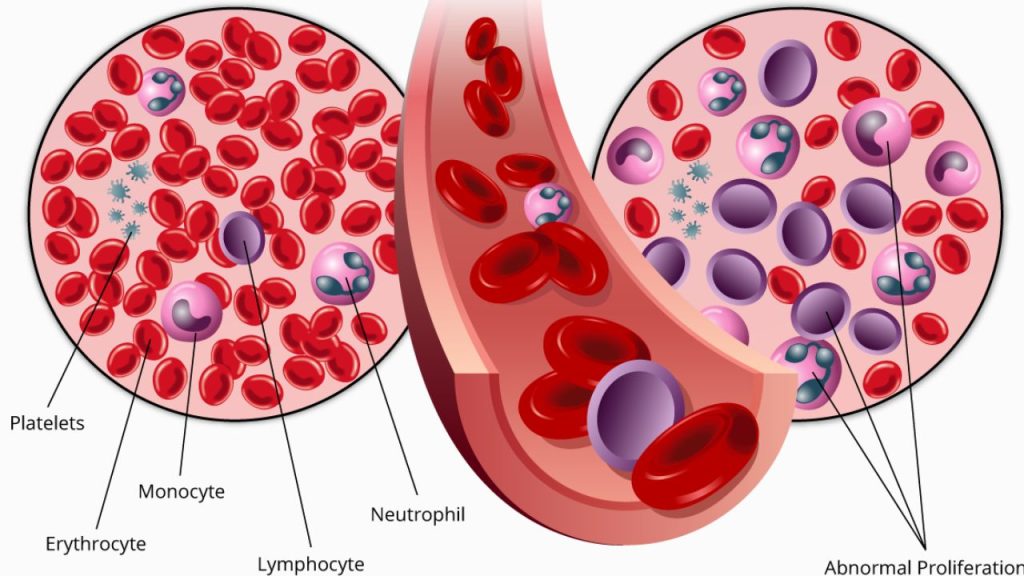
Acute Leukemia in India
- A sort of malignant growth that influences the blood and bone marroww, portrayed by the fast creation of unusual white platelets.
Types of Acute Leukemia
- Acute Lymphoblastic Leukemia (ALL)
- Acute Myeloid Leukemia (AML)
Causes and Risk Factors
1.Genetic Factors:
- Inherited mutations in hemoglobin genes.
2. Prevalence in India:
- Higher rates in certain regions and ethnic groups (e.g., Mediterranean, Southeast Asian communities).
Symptoms
1. Common Symptoms:
- Fatigue and weakness.
- Pale skin and jaundice.
- Growth delays in children
- Bone deformities (e.g., facial changes).
Diagnosis
1. Physical Examination:
- Checking for signs such as swollen lymph nodes or liver/spleen enlargement.
3. Blood Tests:
- Complete blood count (CBC) to assess blood cell levels and look for abnormal cells
2. Bone Marrow Biopsy:
- Extraction of bone marroww to examine for leukemia cells.
Treatment Options
1. Chemotherapy:
- Main treatment modality for acute leukemia, often involving multiple drug regimens.
2. Targeted Therapy:
- Medications that target specific genetic mutations or pathways in leukemia cells.
3. Immunotherapy :
- Treatments that boost the body’s immune response against cancer cells, such as CAR T-cell therapy.
4. Stem Cell Transplant:
- Replacement of diseased bone marroww with healthy stem cells, usually after intensive chemotherapy.
Prognosis
1. Factors Influencing Prognosis
- Type of acute leukemia, age, overall health, and response to initial treatment.
2. Survival Rates:
- Vary significantly; ALL generally has a better prognosis in children than in adults, while AML outcomes depend on several factors, including genetics.
Conclusion
1. Summary of Acute Leukemia Importance :
- Emphasis on the need for early diagnosis and comprehensive management.
2. Encouragement for Awareness :
- Importance of awareness programs for screening and prevention.






